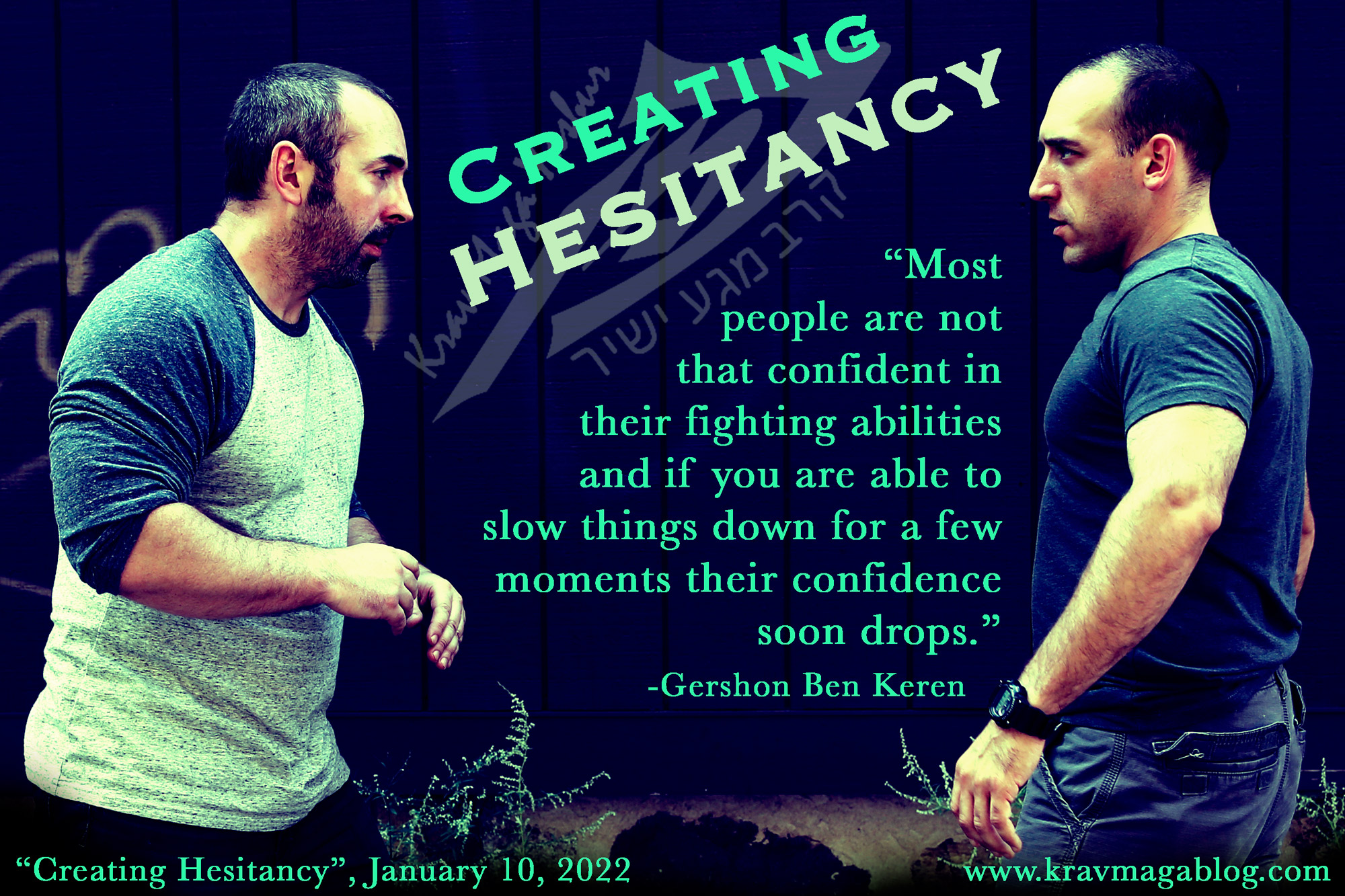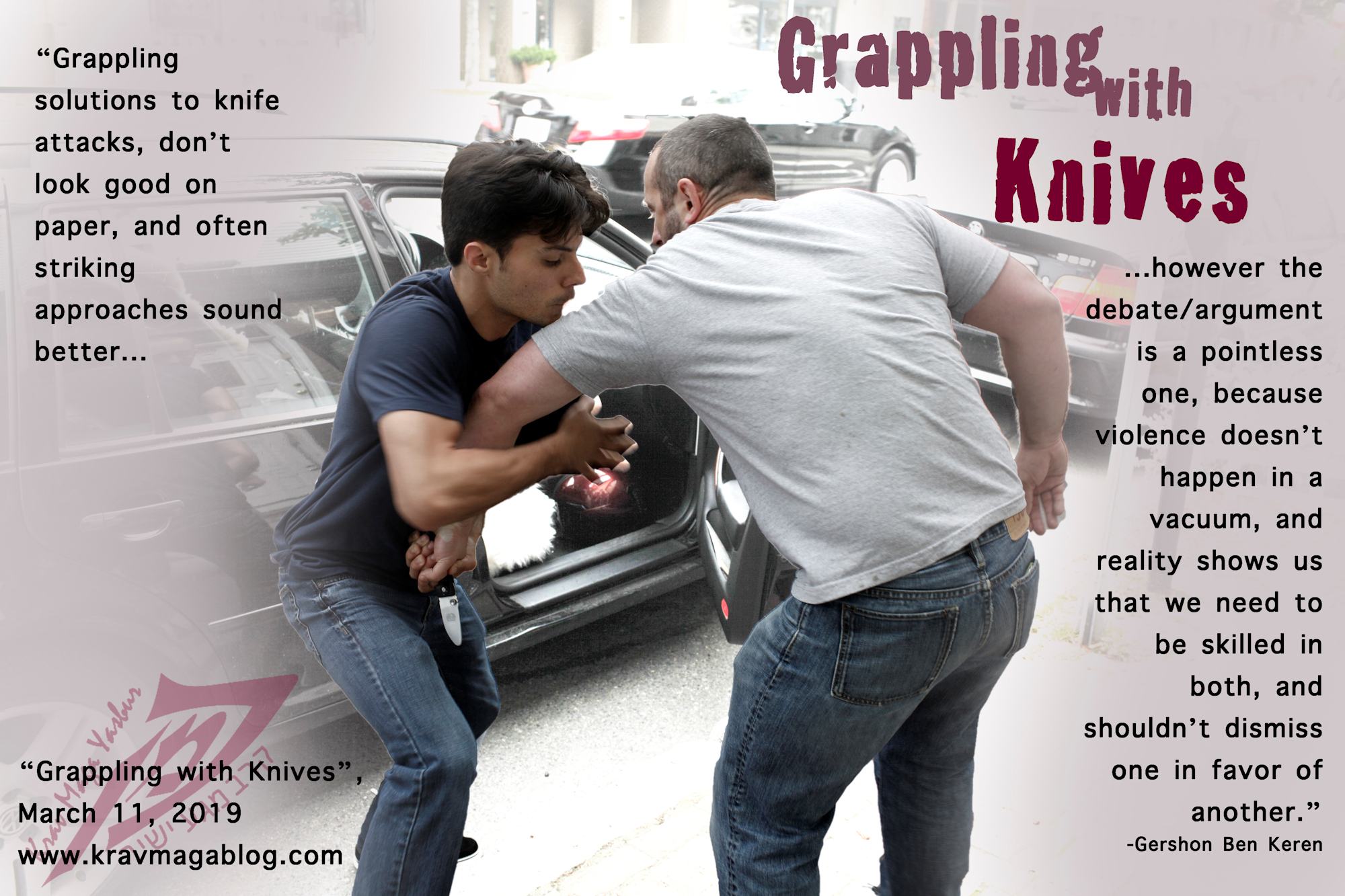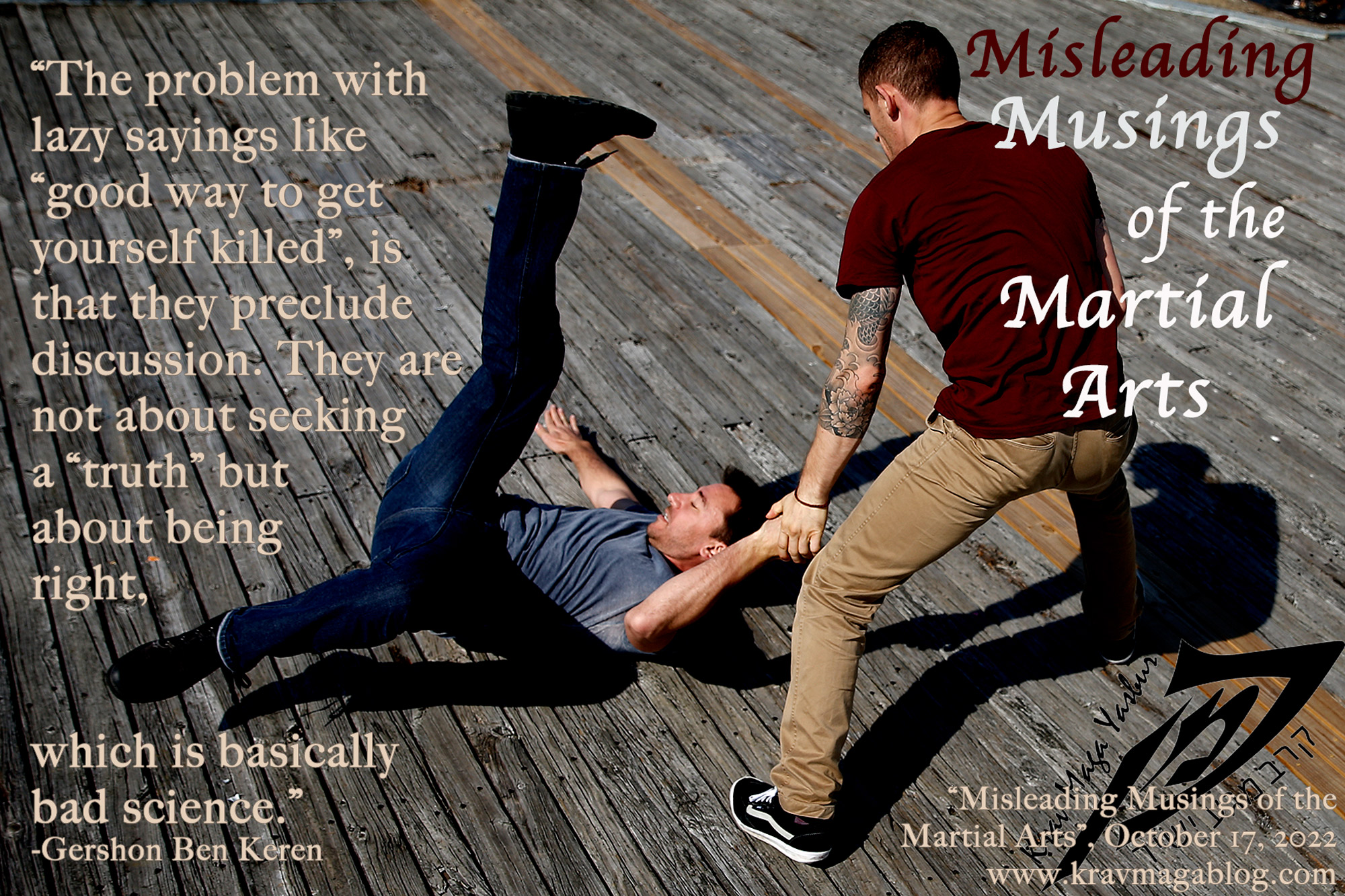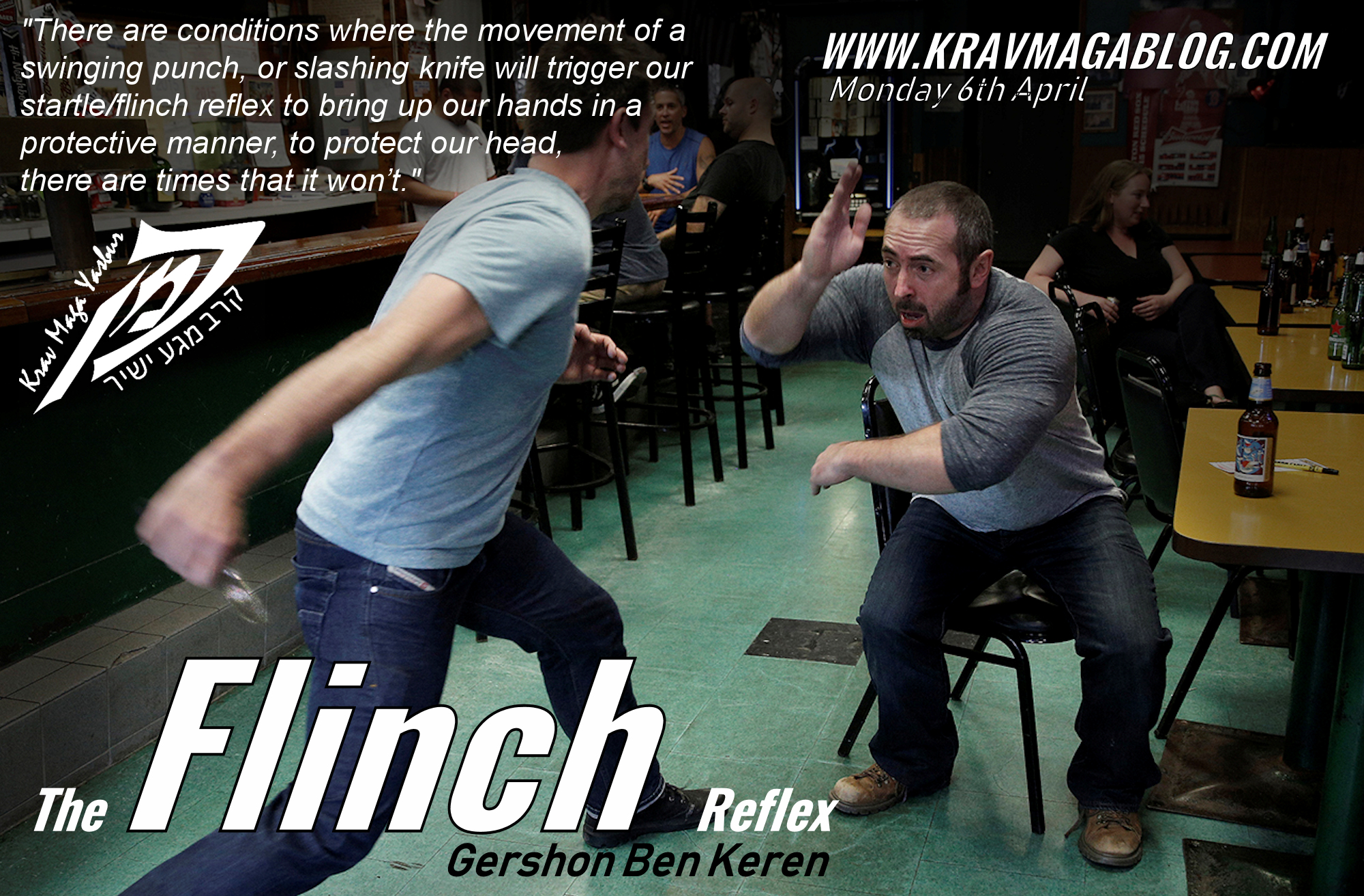That Will Never Work On The Street, is an article written by Gershon Ben Keren, a 5th Degree Black Belt in Krav Maga, who teaches Krav Maga in Boston, MA. He has also authored three Amazon best-Selling Books on Krav Maga.
How many martial artists does it take to change a lightbulb? 100. 1 to get up on a chair to change it, and the other 99, to tell them that their “technique” would never work on the street. The “it would never work on the street” argument, is one that every martial arts/self-defense instructor will have been subjected to at some point. More often than not, no actual argument is made as to why a technique wouldn’t work, or a better solution offered, etc. there is no discussion, and not even debate - what is being criticized is simply dismissed. In this article, I want to share some of the general things I look for in a technique, as to ascertain whether it has merit for me, personally and/or for my students.
Firstly, I don’t believe in absolute statements – they have a danger of tripping up the person who makes them. I remember a discussion I had in Israel with some other European Krav Maga instructors, from different associations, in which we were sharing some different ideas and approaches to various threats and attacks. Everything was going great, and we were all broadly agreeing with each other’s input, when I demonstrated a certain knife control. One of the Israelis who was with us, stated that it was an interesting solution that he hadn’t seen before, and that he would like to try/test it a bit. The solution/technique wasn’t “traditional” Krav Maga, but was one that someone who used to work door/bar security had taught me; and that he’d used successfully on a number of occasions. Before we had a chance to play around with it, one of the European instructors jumped in to say that it was a bad technique that would never work. The technique was one that I’d used successfully a few weeks earlier, so I had firsthand experience of it working, and the knowledge that it had worked on several occasions for the person who taught it to me. This is the danger when absolute statements are made, as you may well be talking to a person who has used a technique or tactic, and made it work. This doesn’t necessarily make it a good technique that everybody should learn – both myself and the person who taught it to me had a very strong background in Judo, and the technique relied heavily on the skills and attributes that training in this discipline brings. Was the technique a good, universal technique? Probably not, but for a Judoka, it worked well. When looking at/evaluating a technique, one of the things I look at is what skills and attributes are needed to make it work. Just because I may not possess them, doesn’t mean the technique won’t work for those who do. Skills and attributes count for a lot e.g. Terry O’Neill, a famous British doorman, used to end most of his fights/confrontations, using a high kick; but according to many reality based self-defense instructors, high kicks don’t work on the street.
Context is perhaps one of the most misunderstood concepts when it comes to “evaluating” self-defense techniques. A technique that might be appropriate for one situation, may not be appropriate for another. If your self-defense experiences only come from the dojo/studio, a particular technique may seem universally appropriate – and may even be taught as such. In reality, situations determine solutions, and there may be times when it is impossible to apply what you thought would work in every situation. A fight is a dynamic thing, and sometimes an aggressor’s fast movement, and close proximity make things that worked well in the studio, fall apart extremely rapidly, in real life. In a certain context they were “good” and “reliable” but in another, wholly inappropriate and even dangerous. A good way to test whether your gun disarming techniques are appropriate for all situations, or whether you may require some alternative methods, is to have a partner with a small frame revolver or pistol repeatedly strike you with it, as they move you in a variety of directions – be honest and record your success rate. If a high percentage of your disarms fail, you need to ascertain whether it is down to a lack of skills and attributes (and what amount of training it would take to address this), or whether your “standard” disarms don’t enjoy a great deal of success in this context. This doesn’t mean they are bad techniques, but just that, like any technique, they can be limited by context.
When I evaluate a technique, for my personal use (I have certain skills and attributes my students don’t, or don’t yet possess) or for my students, one of the things I look at, is whether the technique takes into account the assailant’s potential response to it. When I deal with knife, I look to take away movement of the weapon/weapon arm, and wrap/clasp the weapon arm as soon as possible. The reason I look to do this, is because I know my attacker will begin to retract/retain their weapon, as soon as I try to control it. If a technique fails to acknowledge the potential response(s) an attacker will make when a particular technique is employed, I know that the technique has certain failings or certain skills need to be trained in order to get it to work. My evaluation of whether the technique has merit for me, is based on the time I believe it will take me to develop the necessary skills to get a high enough percentage score where the technique is successful – otherwise I may be better off looking at other techniques that enjoy a similar success rate, but require fewer skills and attributes in order to make this happen. It doesn’t mean the technique is a “bad” one, just that those who will be able to make it work, possess necessary skills, which I would need to work on and develop.
Another thing I look at in a technique is the position it puts me in, should it fail e.g. do I have a next solution/technique I can try to implement, or has my commitment to a particular technique been an all or nothing endeavor? Don’t get me wrong, there are times when absolute commitment to what in other situations, would be a sub-par solution, is necessary – if an assailant denies you use of preferred solutions that enjoy a relatively high success rate, you may need to commit to one that in normal circumstances you wouldn’t use/employ. This is where it is important to understand the context in which a solution is being taught. Our preferred solutions should give us options if they are to fail e.g. we should end up in a better, rather than worse, position if we are not successful in employing them. Failure to acknowledge that a technique can fail, due to our poor performance, or the actions of our assailant, is a dangerous oversight to make. Knowing what to do, and having a course of action you can take when a technique fails, is an extremely important survival skill to have.
Saying “never” and making absolute statements, without first examining context, looking at skills and attributes, considering responses, and looking at different outcomes, may result in you dismissing something that may have some merit, or at least enhance your understanding of your own solutions. Any and every technique can be made to, and will work in the right context/situation, and it is worth remembering that. Whether the technique is a relevant one for you personally, is another matter.
0 COMMENTS













